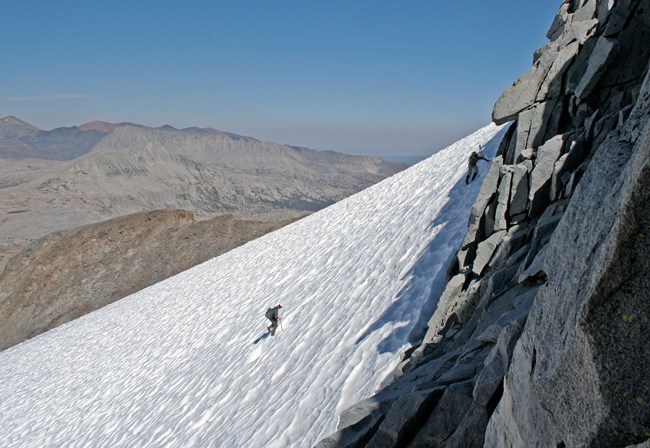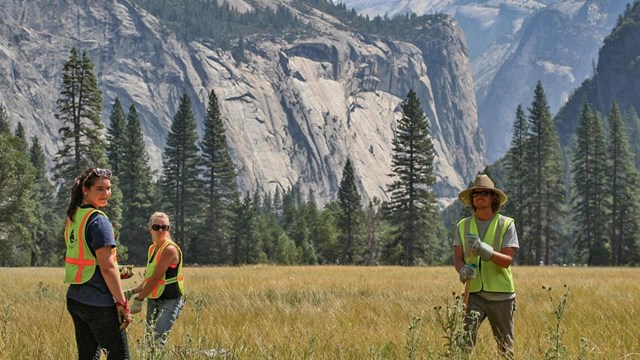|
Lyell Glacier: 1883 vs. 2013 

Left image
Right image

Changing GiantsEarth goes through natural cycles of warming and cooling, typically lasting tens of thousands of years. Because glaciers respond to changes in Earth’s climate and their movements carve long-lasting records into the landscape, they are key to allowing geologists to “see” into the past. Around 20,000 years ago, the Tioga Glaciation (the last glacial maximum) filled much of Yosemite with glaciers and ice fields; the largest of these stretched nearly 50 miles from Mount Lyell, down the Grand Canyon of the Tuolumne River, and through Hetch Hetchy Valley. These massive glaciers retreated, then crept forward and retreated again for thousands of years. For several periods around 10,500–5,400 and 4,800–3,200 years ago, the Sierra Nevada may have been entirely free of glaciers. By around 3,200 years ago, as Earth entered a natural cooling period known as neoglaciation, small glaciers began to return to the Sierra Nevada. While Earth is still within this natural cooling period, these glaciers are likely to vanish within 50–250 years due to warming caused by greenhouse gas emissions. What changes are we seeing?
Visit our keyboard shortcuts docs for details
This animation shows the retreat of the Maclure and Lyell glaciers from 1883 to 2016. Note: There is no audio. What’s next?A glacier's health is determined by a combination of winter snowfall and summer and winter temperatures. Although snowfall at high elevations has not declined, both summer and winter temperatures are continuing to rise across the western US. Glaciers may not shrink during the winter, but higher winter temperatures warm the snowpack and require less energy for the ice to reach melting point in summer. Between 1903 and 2004, the volume of water frozen in Sierra Nevada glaciers dropped by over 155 billion gallons—more than the size of the entire Hetch Hetchy Reservoir. Geologists don’t know for sure how long the Lyell and Maclure Glaciers will be around. Climate change is associated with extreme weather events, which make it more difficult to predict changes from year to year. However, based on current rates of loss, glaciers are likely to disappear from Yosemite’s peaks within decades. When that happens, part of Yosemite’s geologic story will slip into the past, sending ripple effects to plant communities, wildlife, and all those who visit downstream ecosystems. 
Climate Change in Yosemite
What does it mean to conserve and protect a place during a time of large-scale environmental change? 
How is the park responding?
Yosemite serves as a unique living laboratory for climate scientists and a center for teaching, learning, and connection. 
What can we do?
Simple choices can change the environmental impact of your trip to Yosemite. How can we shrink the carbon footprint we leave behind?
Visit our keyboard shortcuts docs for details
Yosemite National Park is famous for its spectacular glacially carved landscape. Although glaciers have come and gone many times in the past, there are still two active glaciers near Yosemite's highest peaks. |
Last updated: April 1, 2020
